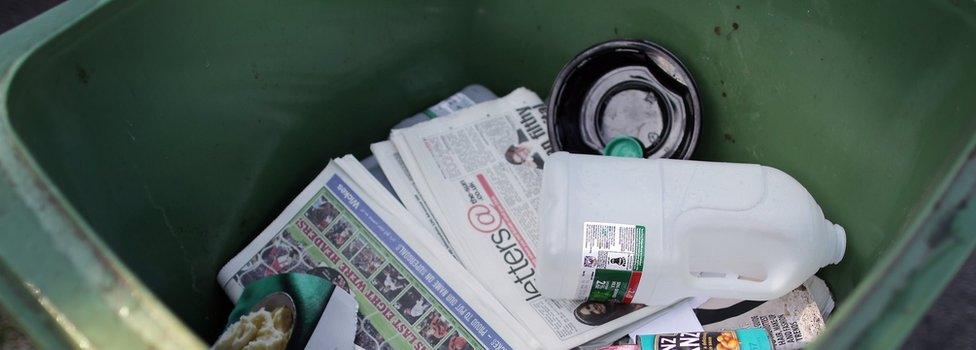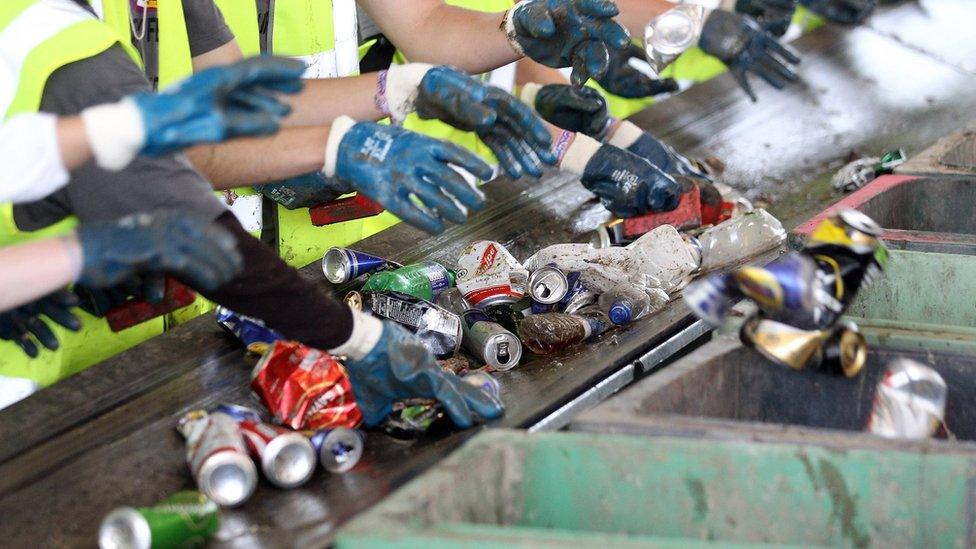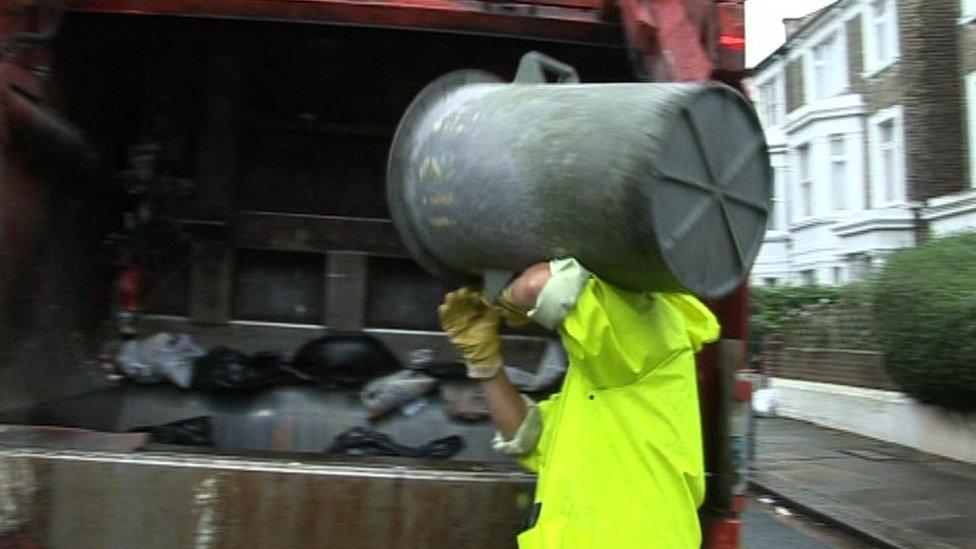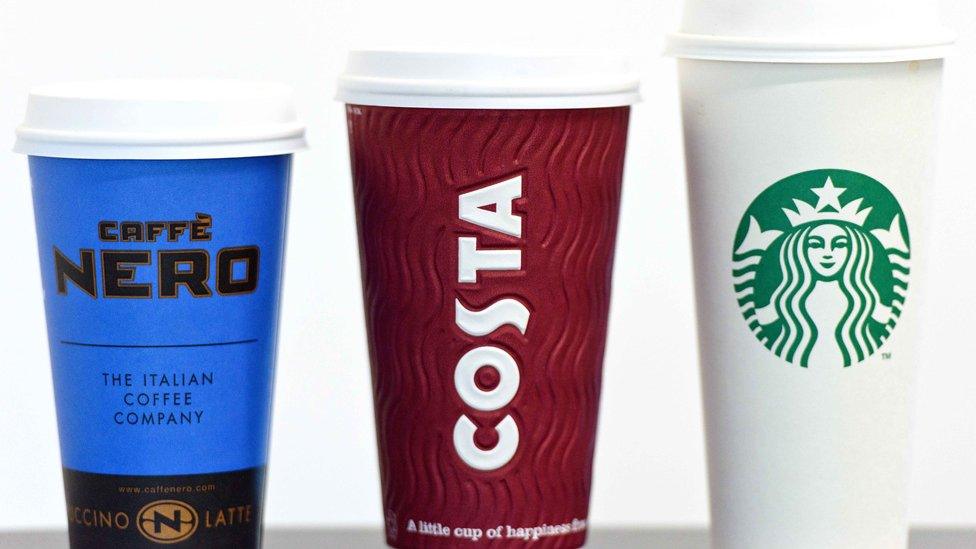Rejected recyclable waste up 84% in England since 2011, data shows
- Published
Are you recycling properly?
The amount of household rubbish being rejected for recycling in England has increased by 84% over the past four years, government figures show.
A BBC Freedom of Information request found councils were unable to recycle 338,000 tonnes of waste in 2014-15 - up from about 184,000 tonnes in 2011-12.
But Department for Environment data shows recycled waste in the period rose from 10.7m to 11m tonnes a year.
Councils say they are working to stop people putting the wrong items in bins.
The cost to local authorities of re-sorting so-called contaminated recycle bins is said to be the primary reason the vast majority of the waste is being rejected.
The Freedom of Information Request by BBC Breakfast found 97% of the rejected rubbish was incinerated or sent to landfill in 2013-14 - the most recent year for which such figures were available.
Just over 173,000 tonnes of rejected waste was incinerated or sent to landfill in 2011-12, with the figure rising to 270,000 tonnes two years later.
There is a mandatory requirement on local authorities to provide information on recycling to the government.
Statistics show about 45% of household waste is currently recycled. There is an EU target for the UK to recycle at least 50% by 2020.

What can be recycled?

Yes: (but check your individual council's policy as they vary)
Paper: cardboard boxes, newspapers, magazines, envelopes, junk mail, food and drink cartons including Tetra Pak
Plastic: margarine and ice cream tubs, yogurt pots, fruit punnets and ready meal trays
Bottles: drink, shampoo and detergent bottles
Tins and cans: both steel and aluminium, as well as aerosols
Kitchen foil and foil trays
Glass: all colours but no broken glass or ovenware
No:
Tissue and kitchen roll
Plastic wrap, cling film, bubble wrap and plastic bags
Coffee cups
Plastic and paper contaminated with food - including grease-stained pizza boxes and paper food plates
Crisp packets and sweet wrappers
Polystyrene
Nappies
Soft plastic / metallic packaging like pet food pouches
What can be collected from households varies between councils.
Many other items including textiles, electronics, plastic bags and batteries can also be recycled at designated centres and some supermarkets.

Bin there, done that: lessons from around the UK

The figures show 14.99% of recyclable waste was rejected in 2014-15 in Kirklees in West Yorkshire. The council was among the authorities with the highest contamination rate in England - the national average is 3%.
The council said a substantial quantity of its recyclable waste had been taken to a different plant from usual "which has a low tolerance for contamination, and meant that an entire load of waste could be rejected" when only a small portion of the load should have been.
Elsewhere, about 14.4% of recyclable waste was rejected in 2014-15 in the borough of Greenwich in south-east London.
A council spokesman said it took the contamination of recycling very seriously and pursued "a proactive approach on this issue through engaging with residents, businesses, managing agents and landlords".
It said the high levels of contamination were "not an accurate reflection" of the situation, saying equipment it had been using to process material was out of date and some potentially recyclable materials were being rejected. Its contractor is now using a different processing plant.
Greenwich added it had seen a significant number of new flats being built with communal containers for recycling and "it is recognised by all local authorities that recycling in flats and the associated contamination issues are a challenge".
Hull council, meanwhile, saw 14.2% of its recyclable waste rejected.
It costs the council £50,000 a month to deal with contaminated items and the authority at one stage resorting to removing bins from households it believed were consistently breaching the rules. However, it has now decided to take a different approach and will be spending £100,000 next month to educate the public about the issue.

What's being done to change things?
Waste reduction charity WRAP says contamination could be reduced by promoting greater consistency across the country about what can be collected - there are thought to be about 300 different recycling schemes in operation across England.
It says it is working with government and industry to devise "a consistent set of guidelines nationally".

A spokesman for the Local Government Association said: "In the past decade, councils and residents have worked together to radically increase recycling and divert millions of tonnes of waste from landfill...
"The problem is there is widespread confusion over what can and cannot be recycled. If just one non-recyclable item is included with recyclable items, the whole bin is effectively contaminated. Councils then have to re-sort it, which is time consuming and very expensive.
"There is no one-size-fits-all solution to waste collection. What works in an inner city suburb won't necessarily work in the countryside. The types which would suit a large detached house in the country would be completely unsuitable for a high-rise block of flats in inner-city London and vice versa."
The Department for Environment said tremendous progress has been made in boosting recycling rates, but acknowledged more needed to be done.
- Published7 March 2016

- Published27 July 2016
